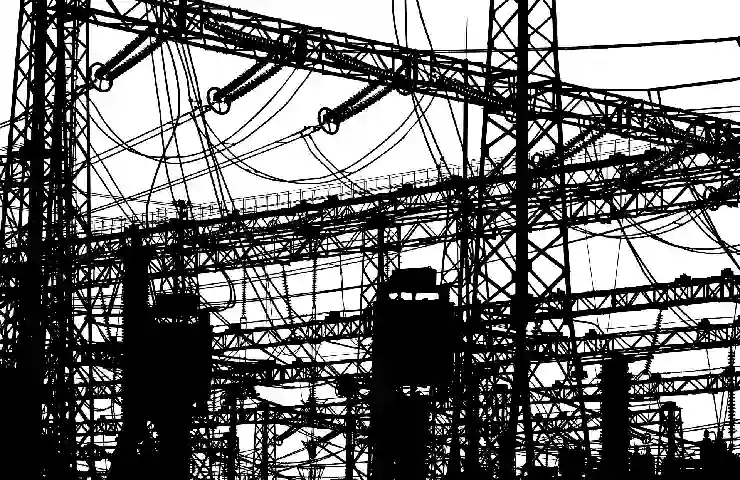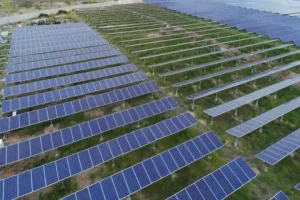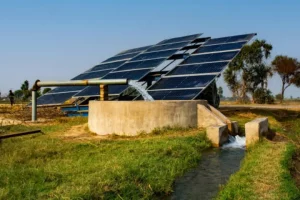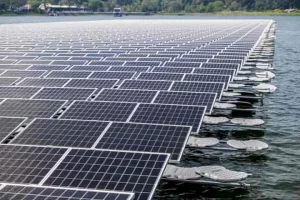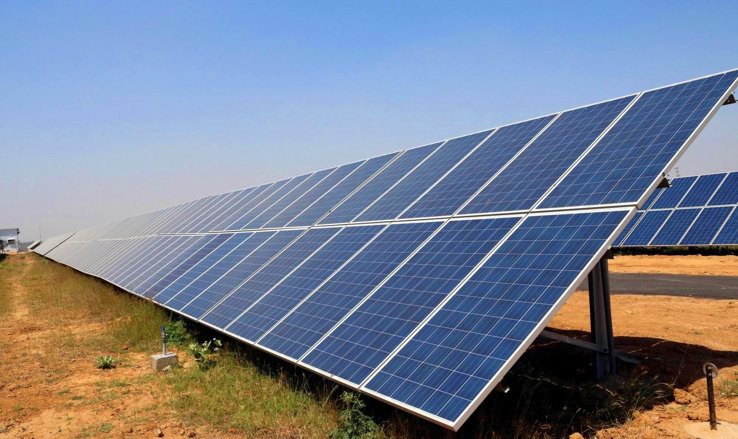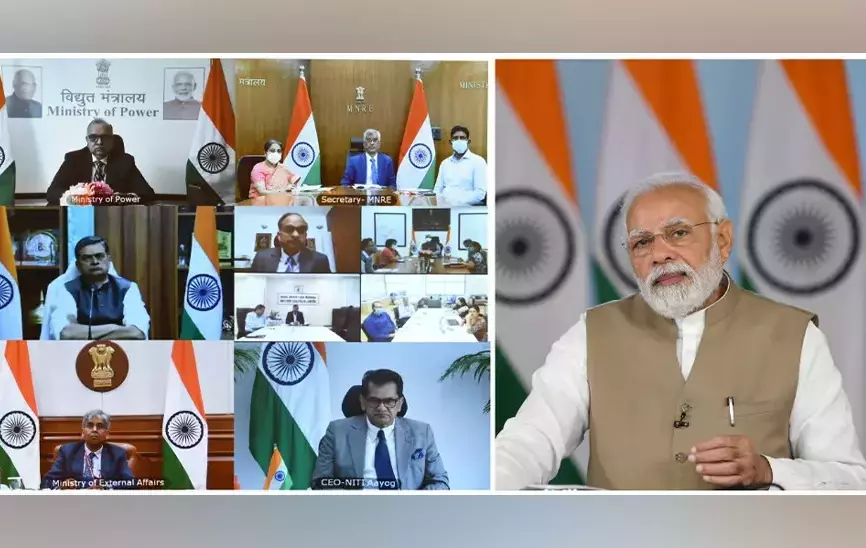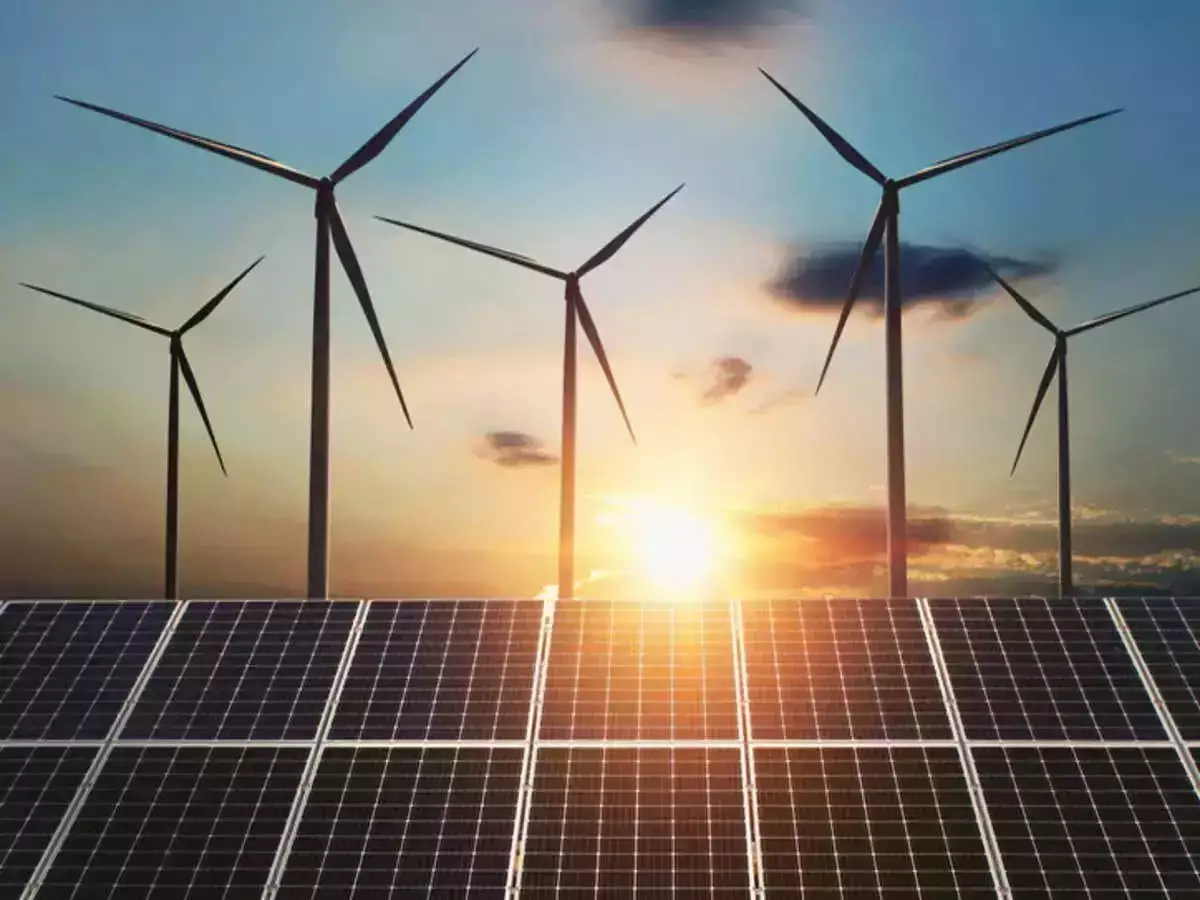India plans to set up the world's largest renewable energy park in Khavda, Gujarat. The giant enterprise will have a battery storage capacity of 14 GW-hour.
The initiative will ensure uninterrupted and stable supply in the grid drawing power from renewable energy resources.
Separately, India also plans to set up the largest grid-scale battery storage system with a capacity of 13-GW-hour in Ladakh.
1GWh (1,000-MWh) of battery capacity is sufficient to power 1 million homes for an hour and around 30,000 electric cars.
"The Khavda renewable energy park in Kutch that will be the world’s largest plant to generate 30GW of clean energy is wonderful news for India. Such measures balance the amount of greenhouse gas (GHG) emissions in a growing economy of India as compared to the one removed from the atmosphere by opting for greener energy sources," says Anjal Prakash, Research Director at the Indian School of Business, and the lead author in the IPCC’s 6th Assessment Report.
India has an ambitious target of creating capacity of 175 GW renewable energy by 2022. This includes 100 GW from solar, 60 GW from wind, 10 GW from bio-power and 5 GW from small hydro-power.
“The highest installed storage capacity in the world is a measly 400 megawatt-hour (MWh),"said Union power and renewable energy minister Raj Kumar Singh at Mint Energyscape conclave on Friday.
He added: “But the first major bid that I am coming out with is 1,000 megawatt-hour—two-and-a-half times the largest capacity in the world. But that also is not sufficient. Only for my national grid-level operations I will need 4,000 megawatt-hour."
The government is also drumming up support for solar at the international level. It has stitched up the International Solar Alliance (ISA) with France to tap the sun's energy and promote the use of solar energy in other countries.
Recently, the ministry of new and renewable energy proposed new rules for large consumers of electricity to purchase a certain percentage of their total consumption of electricity from renewable energy sources. Once approved, this measure will go a long way in reducing India's carbon footprint.
"Taking the green energy path will help us in moving away from coal-based energy and help us in pursuing a path of achieving net-zero by 2050," observes Prakash.
The NTPC recently commissioned a large floating solar farm on its reservoir in Andhra Pradesh. Plans are afoot to set up similar other solar plants that do not take up large chunks of land.
Prakash says that India should strive to have one such solar park in every state. "This process will have co-benefits—will make the states achieve self-reliance in electricity and also reduce energy poverty which will bring prosperity for the economy and its people without harming the planet".
At the conclave Singh unveiled his vision on battery storage: “I am going to do it big because 1,000 megawatt-hour is a starter. Ultimately, it will go up to 4,000 megawatt-hour. Then in Leh-Ladakh, I am setting up 10,000MW of renewable energy capacity, so I am adding about 13,000 megawatt-hour of storage there. And then in Khavda again, about 10,000-15,000MW of RE (renewable energy) capacity will come up, so I am going to add another about 13-14,000 megawatt-hour of storage there," Singh said.
A wetter southern India could get 40 per cent more rain due to global warming—IPCC report
Facing cloudbursts, landslides and floods with resilient infrastructure, Odisha shows the way






